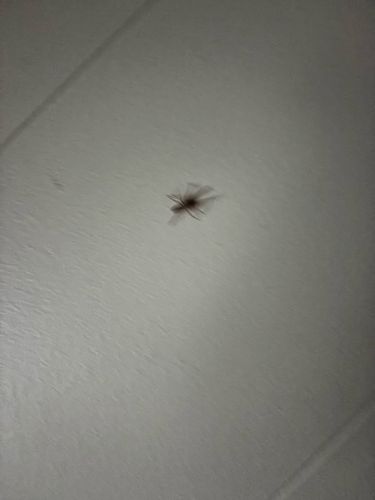Common House Spider (or similar cobweb weaver)
Scientific Name: Parasteatoda tepidariorum (likely, given appearance and location)
Order & Family: Araneae (spiders), Theridiidae (tangle-web spiders/cobweb weavers)
Size: Body length typically 4-8 mm (females are larger than males); leg span can be up to 2-3 cm.

Natural Habitat
Commonly found in and around human dwellings, including ceilings, corners, basements, and sheds. They prefer dark, undisturbed areas.
Diet & Feeding
Insectivorous. They primarily feed on various small insects that get caught in their irregular, tangled webs, such as flies, mosquitoes, moths, and even other spiders.
Behavior Patterns
Nocturnal hunters, they build irregular 3D webs that are often referred to as 'cobwebs'. They are generally timid and will retreat when disturbed. Females lay eggs in silk sacs that are typically attached to the web.
Risks & Benefits
Potential risks are minimal; their bite is rare and usually only occurs if provoked. The venom is generally not medically significant to humans, causing only mild, localized pain and redness. Benefits include natural pest control, as they consume many common household insect pests.
Identified on: 9/24/2025